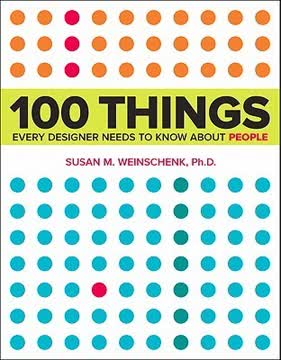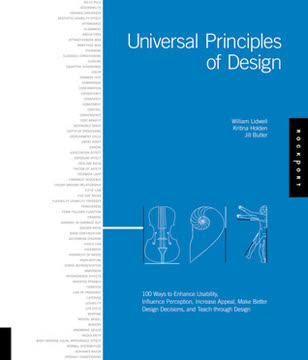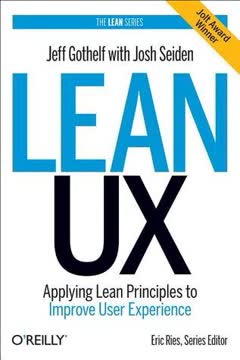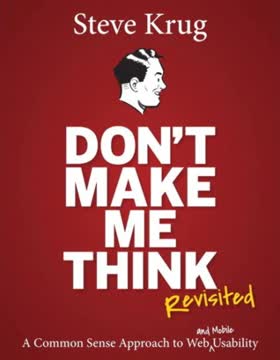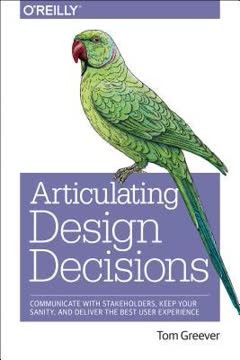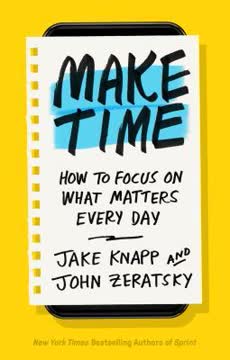つの重要なポイント
1. 明確な長期目標を設定し、スプリントの質問を特定する
「なぜこのプロジェクトを行うのか?6ヶ月後、1年後、さらには5年後にどこにいたいのか?」
野心的な目標を設定する。 スプリントを始めるにあたり、チームの原則と願望を反映した明確な長期目標を設定します。この目標は、スプリント全体を通じて全員が同じ方向に進むための指針となります。過度に高い目標を設定することを恐れないでください。スプリントプロセスが、良いスタート地点を見つけ、最大の目標に向かって実際に進展するのを助けてくれます。
重要な質問を特定する。 目標を設定した後、チームと長期目標の間に立ちはだかる未知の要素や潜在的なリスクを表すスプリントの質問をリストアップします。これらの質問は、スプリント全体を通じて解決策や意思決定を導くガイドとなり、金曜日のテスト後に評価するための準チェックリストとして機能します。スプリントの質問の例:
- 製品を一度も試したことのない人に説明できるか?
- 顧客は私たちの専門知識を信頼するか?
- チームが参加する前に個人が製品を理解できるか?
2. 課題をマッピングし、ターゲットを選ぶ
「ジーン・クランツと彼の地球帰還の図のように、あなたとチームは基本を整理します:長期目標と答えるべき難しい質問。」
ビジュアルマップを作成する。 顧客が製品やサービスを利用する過程を表すシンプルな図を描きます。このマップには以下が含まれます:
- 左側に主要なアクター(顧客、スタッフなど)
- 右側に目標達成
- その間に顧客が製品とどのように関わるかを示す5〜15のステップ
ターゲットを選ぶ。 マップを作成した後、ディサイダー(通常はCEOやプロジェクトリーダー)がマップ上のターゲット顧客とターゲットイベントを一つずつ選びます。この決定がスプリントの残りの部分、スケッチ、プロトタイプ、テストの焦点となります。
3. 個別に競合する解決策をスケッチする
「グループブレインストーミングは壊れているが、より良い方法がある。」
一人で一緒に作業する。 伝統的なグループブレインストーミングの代わりに、チームメンバーが独立して解決策を開発します。このアプローチは深い思考を促し、グループシンクを避けて多様なアイデアを生み出します。4ステップのスケッチプロセスには以下が含まれます:
- ノート(20分):既存の情報をレビューし、ノートを取る。
- アイデア(20分):ラフなアイデアを書き出し、最も有望なものを丸で囲む。
- クレイジー8(8分):最良のアイデアの8つのバリエーションを迅速にスケッチする。
- 解決策スケッチ(30〜90分):最も強力な解決策の3パネルのストーリーボードを作成する。
不完全さを受け入れる。 芸術的なスキルは重要ではありません。誰でもシンプルな形、スティックフィギュア、言葉を使って素晴らしい解決策をスケッチできます。焦点はアイデアを明確に伝え、創造的に問題を解決することにあります。
4. 長い議論なしで賢明な決定を下す
「スプリントはスタートアップにスーパーパワーを与える:高価なコミットメントをする前に、完成した製品と顧客の反応を未来に早送りして見ることができる。」
構造化された意思決定を使用する。 終わりのない議論を避け、効率的な決定を下すために、5ステップの「スティッキーディシジョン」プロセスに従います:
- アートミュージアム:解決策のスケッチを壁に展示する。
- ヒートマップ:静かにレビューし、興味深い部分にドットステッカーを貼る。
- スピードクリティーク:各解決策のハイライトを迅速に議論する。
- ストローポール:各人が最も好きな解決策に投票する。
- スーパーボート:ディサイダーが最終選択を行う。
ディサイダーを信頼する。 チームの意見は貴重ですが、最終的な意思決定権はディサイダーに委ねるべきです。これにより、明確な方向性が確保され、意思決定の麻痺が防止されます。複数の強力で対立するアイデアがある場合は、「ランブル」でプロトタイプを作成し、顧客と対面でテストすることを検討してください。
5. たった1日で現実的なプロトタイプを作成する
「フェイクイット。」
プロトタイプのマインドセットを採用する。 たった1日で現実的なプロトタイプを作成するために、以下の原則を受け入れます:
- 何でもプロトタイプにできる
- プロトタイプは使い捨て
- 学ぶために必要なだけ作るが、それ以上は作らない
- プロトタイプはリアルに見える必要がある
外観に焦点を当てる。 顧客から正直な反応を引き出すのに十分リアルでありながら、作成に時間がかかりすぎない「ゴルディロックス品質」のプロトタイプを作成します。KeynoteやPowerPointなどの迅速なプロトタイピングツールを使用するか、既存のオブジェクトを改造して物理的な製品を作成します。
分担して作業する。 チームメンバーに役割を割り当てます:
- メーカー:個々のコンポーネントを作成する
- スティッチャー:コンポーネントをシームレスに結合する
- ライター:リアルなテキストやコンテンツを作成する
- アセットコレクター:必要な素材を集める
- インタビュアー:顧客インタビューの準備をする
6. ターゲット顧客とテストして貴重な洞察を得る
「5は魔法の数字。」
5つのインタビューを実施する。 慎重に選ばれたターゲット顧客5人とテストするだけで、最も重要なパターンと洞察を特定するのに十分です。このアプローチは効率と貴重な学びのバランスを取ります。各インタビューを以下の5アクトインタビューフォーマットで構成します:
- フレンドリーな歓迎
- コンテキスト質問
- プロトタイプの紹介
- タスクと促し
- クイックデブリーフ
一緒に観察する。 スプリントチーム全員がインタビューを一緒に観察し、付箋にメモを取ります。この共同観察により、即座にパターンを認識し、結果の誤解を防ぐことができます。シンプルなグリッドを使用してメモを整理し、列に各顧客、行にプロトタイプの異なる側面を配置します。
7. 顧客のフィードバックに基づいて次のステップを学び、計画する
「毎回の勝者。」
パターンを特定する。 インタビュー後、チームとして収集したメモをレビューします。複数の顧客に共通するパターンを探し、特に強い反応(ポジティブまたはネガティブ)に注目します。これらのパターンと洞察をスプリントの質問や長期目標に関連付けて分類します。
次のステップを決定する。 収集したパターンと洞察に基づいて、次の行動方針を決定します。考えられる結果には以下が含まれます:
- 効率的な失敗:解決策が機能しないことを発見し、時間とリソースを節約する
- 欠陥のある成功:改良が必要な有望な方向性を特定する
- 明確な勝者:実装準備が整った成功した解決策を確認する
すべてのスプリントの結果は、アイデアの検証、隠れた問題の発見、新しい機会の明示など、貴重な学びを提供します。この情報を使用して、今後の取り組みを導き、製品やサービスを改善してください。
最終更新日:
FAQ
What's "Sprint: How to Solve Big Problems and Test New Ideas in Just Five Days" about?
- Overview: "Sprint" by Jake Knapp, John Zeratsky, and Braden Kowitz is a guide to solving big problems and testing new ideas in just five days. It outlines a structured process developed at Google Ventures.
- Purpose: The book aims to help teams quickly move from idea to prototype, allowing them to test and learn from real-world feedback without extensive time or resource investment.
- Structure: The sprint process is broken down into five days, each with specific tasks and goals, from understanding the problem to testing a prototype with real users.
- Audience: It's designed for teams in startups, large companies, and even educational settings who need a fast, efficient way to innovate and make decisions.
Why should I read "Sprint"?
- Efficiency: The book offers a proven method to accelerate decision-making and innovation, which is valuable for anyone facing tight deadlines or resource constraints.
- Practicality: It provides a step-by-step guide that can be applied to a wide range of challenges, making it a versatile tool for problem-solving.
- Real-world Examples: The authors share numerous case studies from their experiences at Google Ventures, illustrating the effectiveness of the sprint process.
- Team Collaboration: It emphasizes the importance of diverse team input and structured collaboration, which can improve team dynamics and outcomes.
What are the key takeaways of "Sprint"?
- Structured Process: The sprint is a five-day process that includes understanding the problem, sketching solutions, deciding on the best ideas, prototyping, and testing with users.
- Focus on Prototyping: The book stresses the importance of creating a realistic prototype quickly to gather user feedback and make informed decisions.
- Team Dynamics: It highlights the value of having a diverse team and a clear decision-maker to guide the process and ensure progress.
- Learning from Users: Testing with real users is crucial to validate ideas and uncover insights that can guide future development.
How does the sprint process work in "Sprint"?
- Day 1 - Understand: The team sets a long-term goal, maps the problem, and gathers insights from experts to identify key questions.
- Day 2 - Sketch: Team members work individually to sketch solutions, drawing on existing ideas and inspiration.
- Day 3 - Decide: The team reviews sketches, votes on the best ideas, and creates a storyboard for the prototype.
- Day 4 - Prototype: A realistic prototype is built quickly, focusing on creating a façade that appears real to users.
- Day 5 - Test: The prototype is tested with real users, and the team observes and learns from their reactions to inform next steps.
What is the "prototype mindset" in "Sprint"?
- Disposable Prototypes: Prototypes should be built quickly and be disposable, focusing on learning rather than perfection.
- Realistic Appearance: The prototype must appear real to users to elicit genuine reactions and feedback.
- Focus on Learning: The goal is to learn as much as possible from user interactions, not to create a finished product.
- Optimism and Resourcefulness: Teams should believe they can prototype anything and be resourceful in finding ways to simulate the final product.
How do you decide on the best ideas in "Sprint"?
- Heat Map Voting: Team members silently review sketches and use dot stickers to vote on the most promising parts of each idea.
- Speed Critique: The team discusses the highlights of each sketch, focusing on areas with the most votes.
- Straw Poll: Each team member votes for their favorite idea, providing input for the final decision.
- Supervote: The Decider makes the final call, using their judgment and the team's input to choose the ideas to prototype.
What role do team dynamics play in "Sprint"?
- Diverse Team: A mix of skills and perspectives is crucial for generating a wide range of ideas and solutions.
- Decider's Role: The Decider is responsible for making final decisions, ensuring the team stays focused and aligned.
- Facilitator's Role: The Facilitator manages the process, keeps the team on track, and ensures productive discussions.
- Collaboration and Independence: While collaboration is key, the process also emphasizes individual work to avoid groupthink and encourage diverse solutions.
How do you test prototypes with users in "Sprint"?
- Five-Act Interview: The interview is structured into five acts: a friendly welcome, context questions, prototype introduction, tasks and nudges, and a quick debrief.
- Think Aloud: Users are encouraged to think aloud as they interact with the prototype, providing insights into their thoughts and reactions.
- Observe Patterns: The team watches the interviews together, taking notes and looking for patterns in user feedback.
- Iterate Based on Feedback: The insights gathered from user testing inform the next steps, whether it's refining the prototype or pivoting to a new idea.
What are some real-world examples from "Sprint"?
- Slack: The book details how Slack used the sprint process to refine their product explanation for non-tech customers, leading to significant improvements.
- Blue Bottle Coffee: The team used a sprint to develop an online store that effectively conveyed their brand's quality and expertise.
- Savioke: The sprint helped Savioke develop a friendly robot personality that enhanced guest experiences in hotels.
- FitStar: The process was used to clarify the value proposition of a fitness app, leading to better user understanding and engagement.
What are the best quotes from "Sprint" and what do they mean?
- "Start at the end." This quote emphasizes the importance of defining a clear long-term goal and working backward to identify the steps needed to achieve it.
- "You can prototype anything." It highlights the book's core belief that with the right mindset and tools, any idea can be quickly turned into a testable prototype.
- "Work alone together." This phrase captures the balance between individual creativity and team collaboration, which is central to the sprint process.
- "The prototype must appear real." It underscores the necessity of creating a realistic façade to gather genuine user feedback.
How can "Sprint" be applied in different contexts?
- Startups: The sprint process is ideal for startups needing to quickly validate ideas and make informed decisions with limited resources.
- Large Companies: It can help large organizations innovate and solve complex problems by fostering a focused, collaborative environment.
- Education: Educators can use sprints to teach problem-solving and design thinking, as demonstrated by examples from universities and high schools.
- Nonprofits and Government: The process can be adapted to address challenges in these sectors, helping teams develop and test solutions efficiently.
What are some common challenges when implementing "Sprint"?
- Time Commitment: Clearing five full days for a sprint can be challenging, especially in larger organizations with busy schedules.
- Decider's Involvement: Ensuring the Decider is present and engaged throughout the sprint is crucial for making effective decisions.
- Prototyping Skills: Teams may need to learn new tools and techniques to create realistic prototypes quickly.
- User Recruitment: Finding and scheduling the right users for testing can be time-consuming but is essential for meaningful feedback.
レビュー
本書『スプリント』は、迅速なプロトタイピングと問題解決の実践的アプローチで主に好評を得ている。読者は明確なステップバイステップの指示と実際の事例を高く評価している。多くの人々が、本書の技法がさまざまな業界やチームの規模に役立つと感じている。一部の批評家は、既存の方法論との類似性を指摘し、独創性の欠如を批判している。また、内容がもっと凝縮できたのではないかと感じる人もいる。総じて、レビューアーは本書の実行可能な洞察とイノベーションを加速させる可能性を評価しているが、その広範な適用性や分析の深さについては疑問を持つ者もいる。
Similar Books

